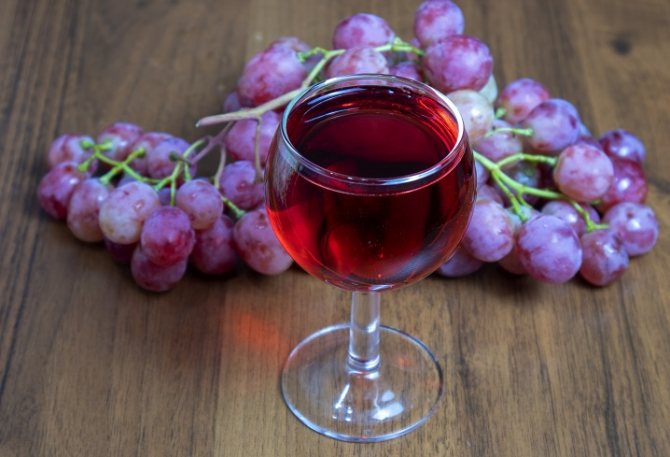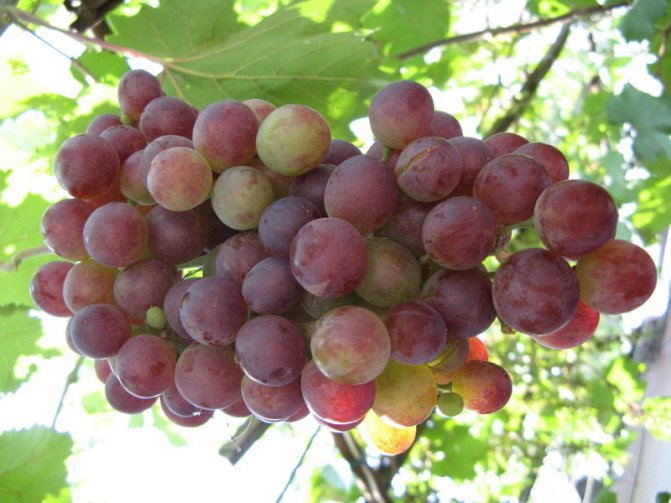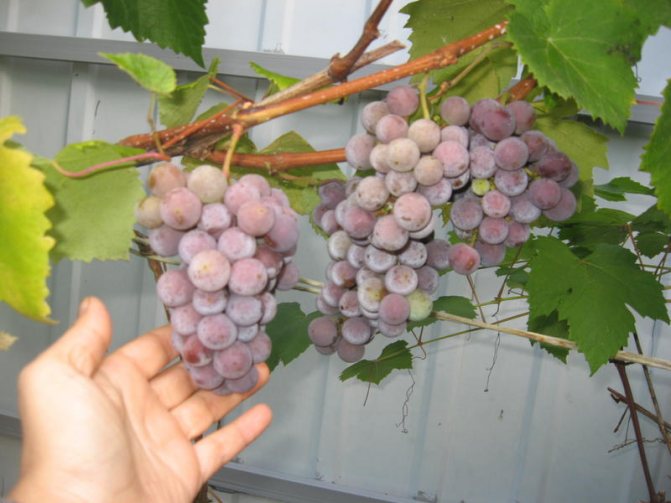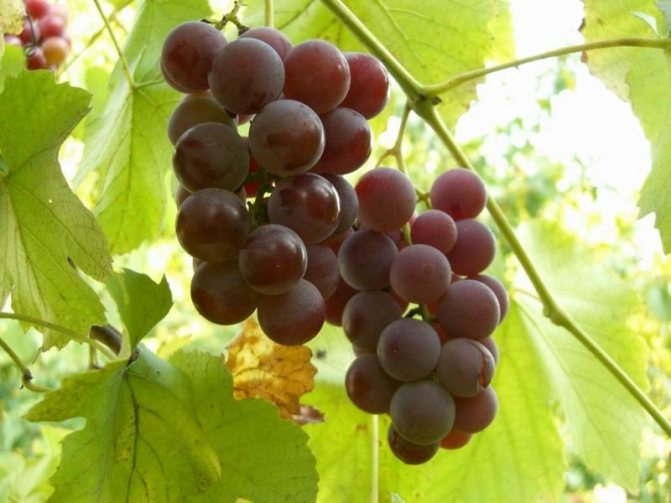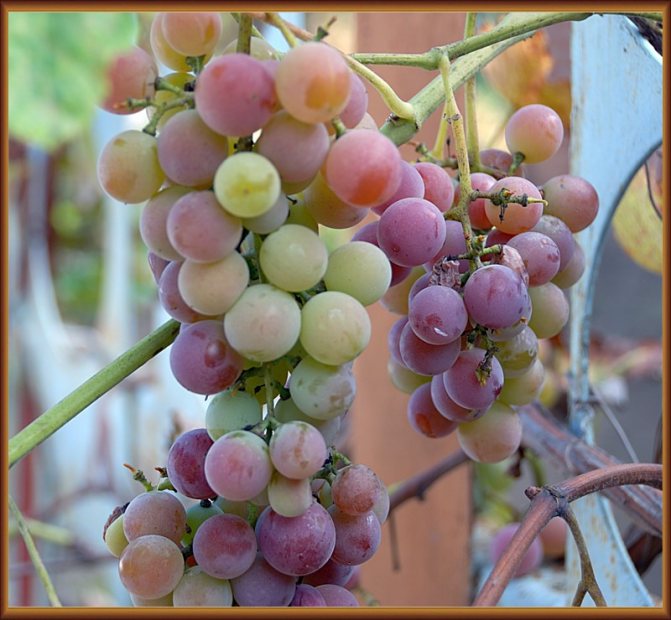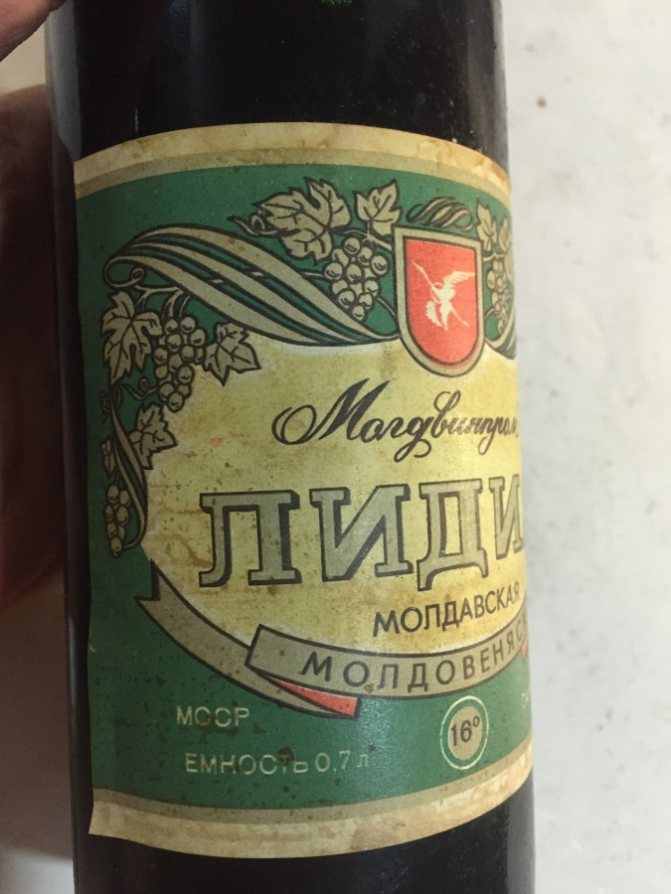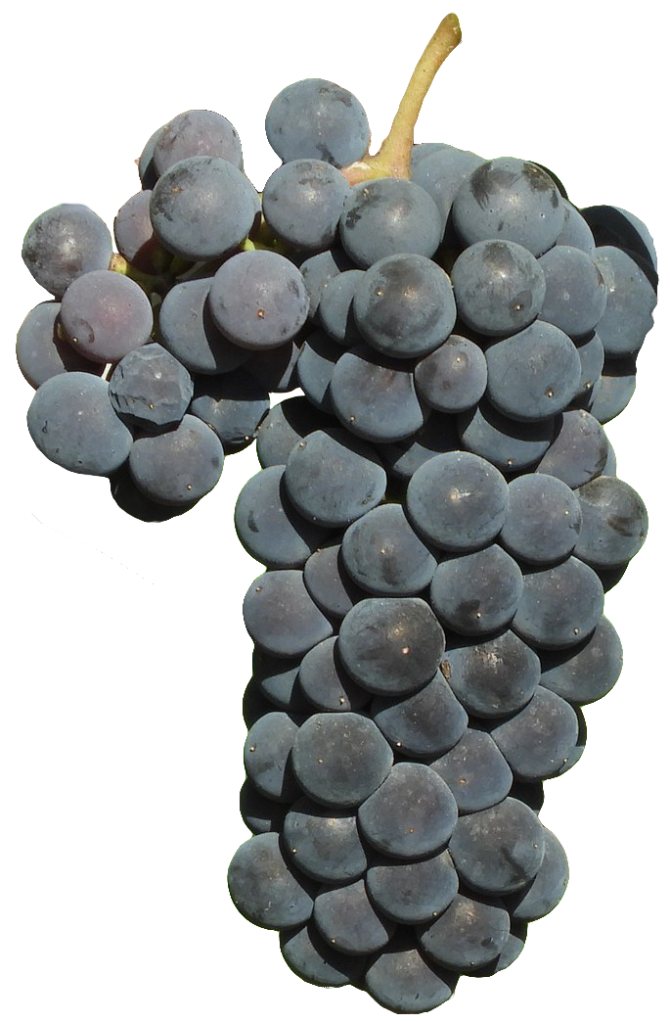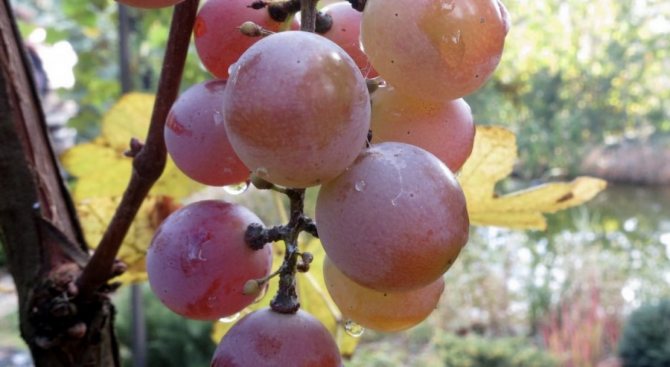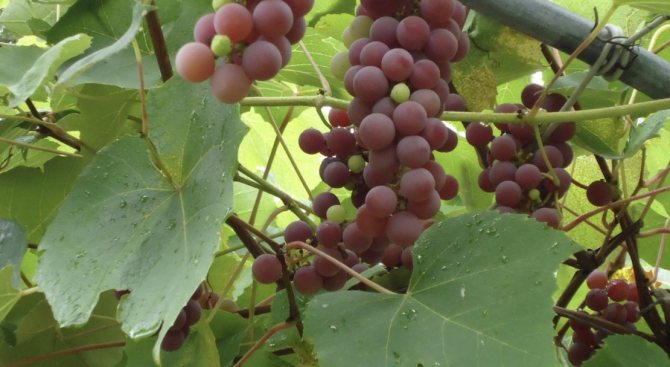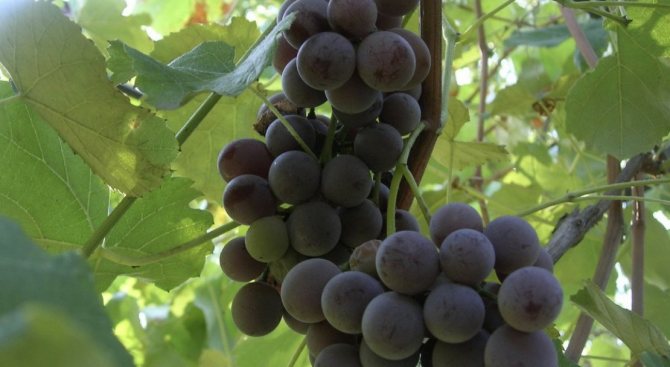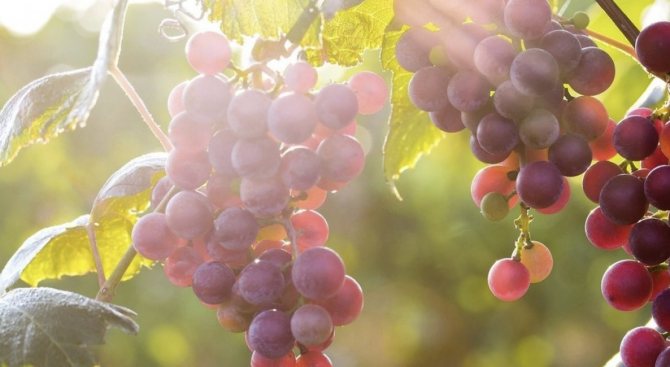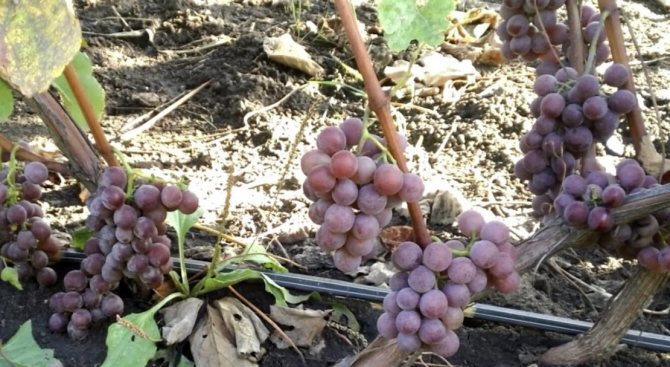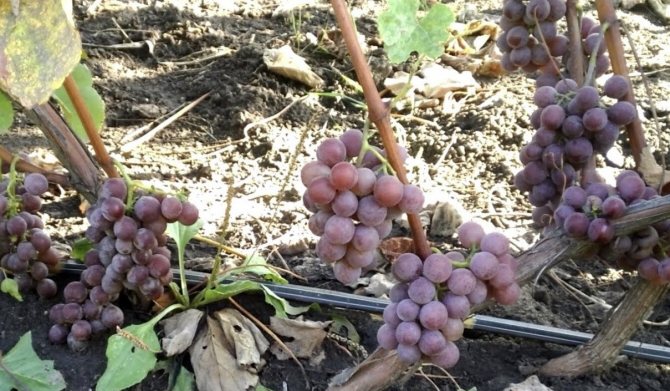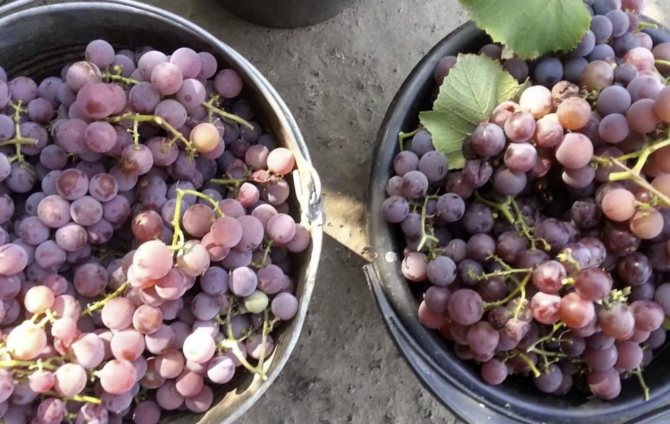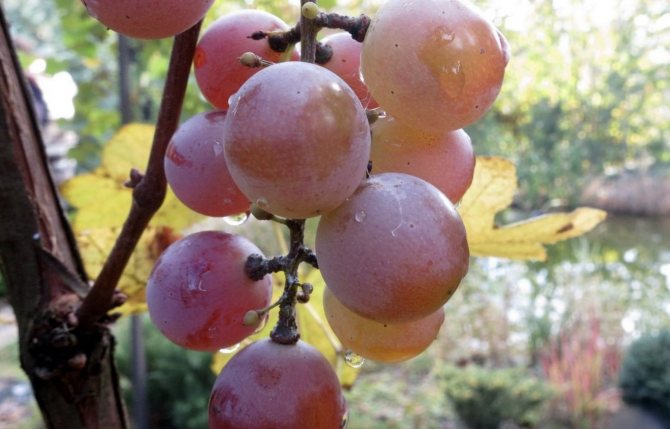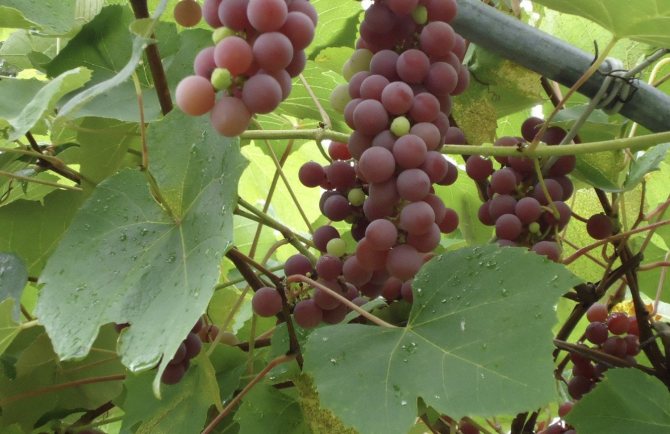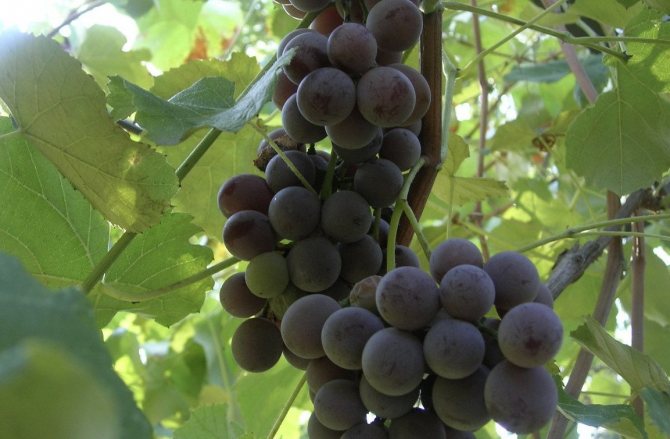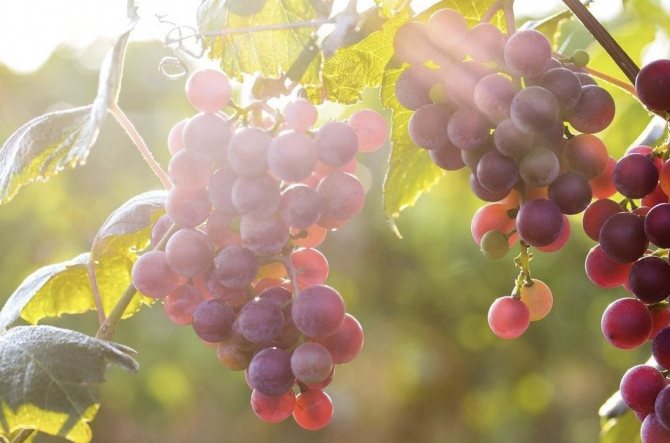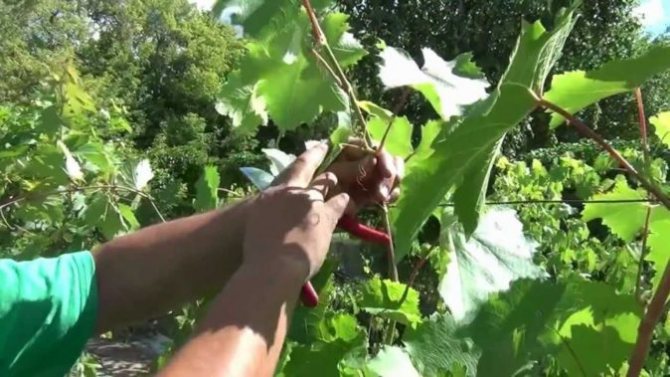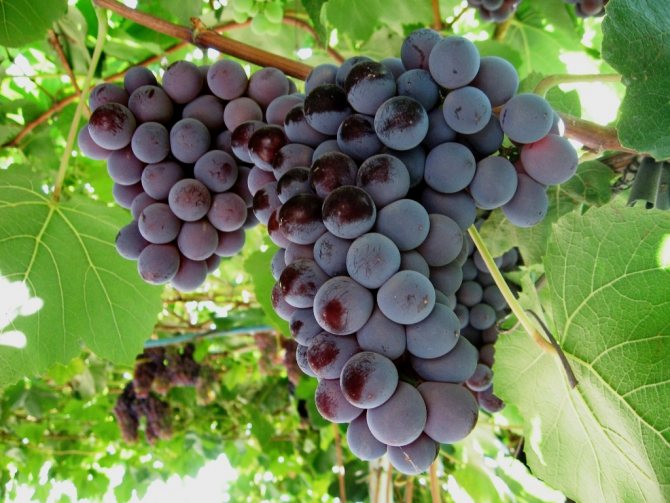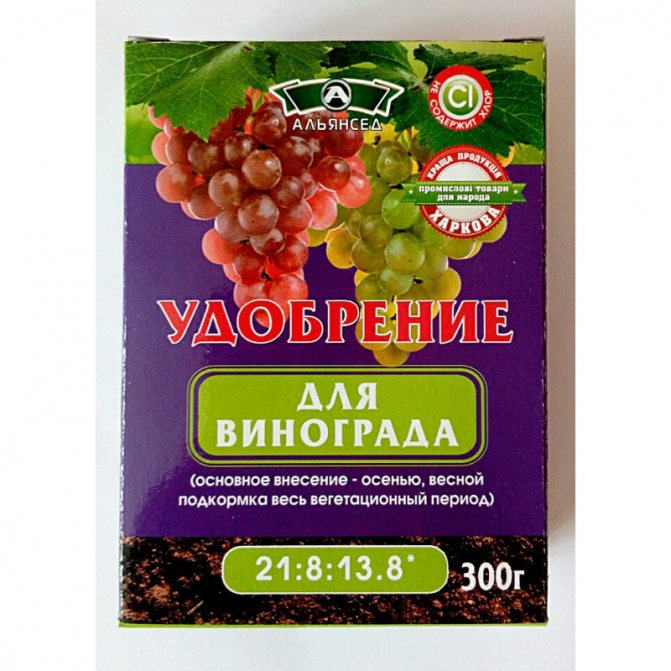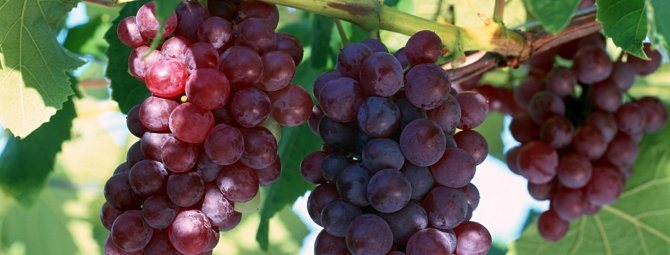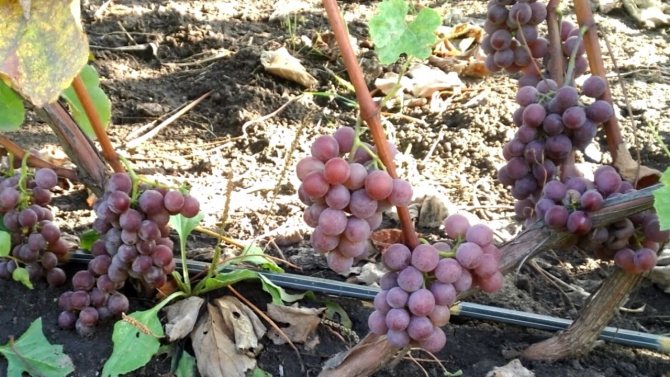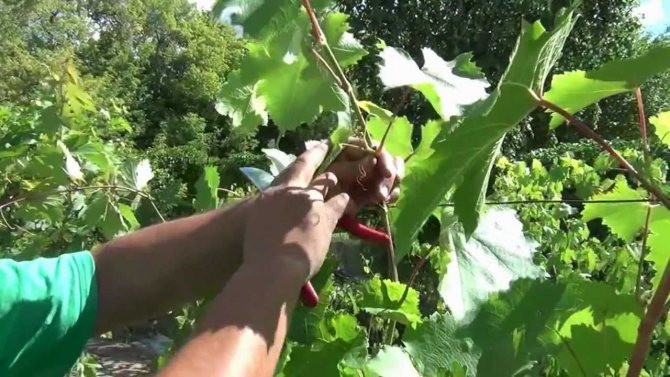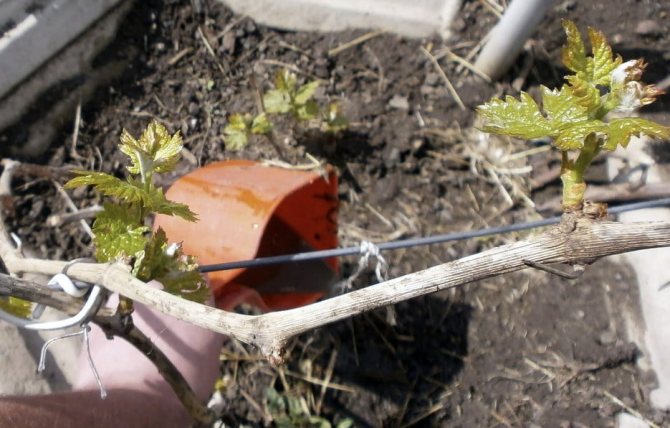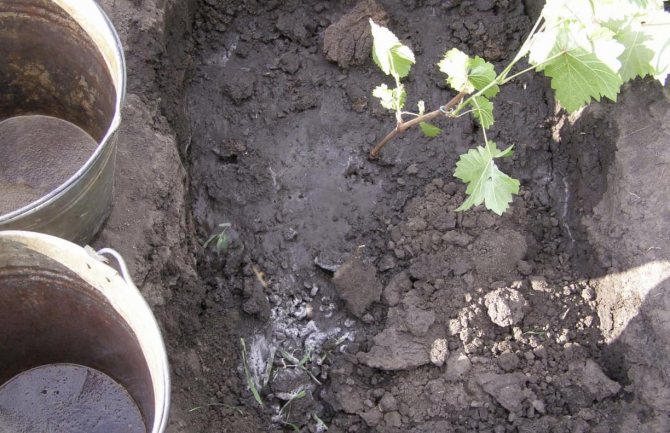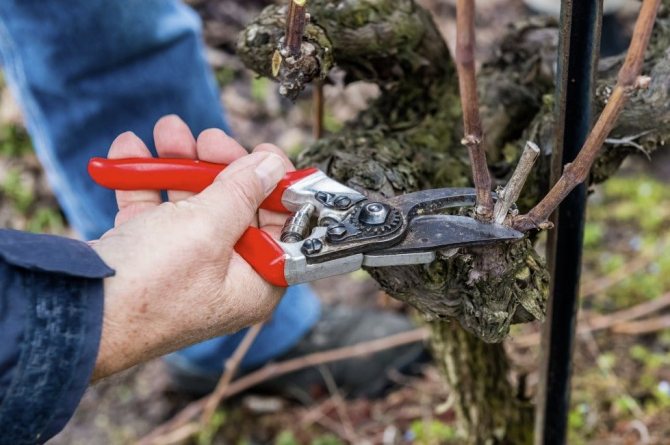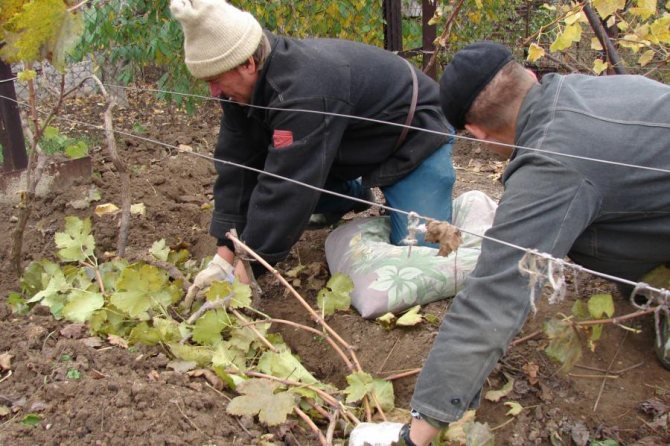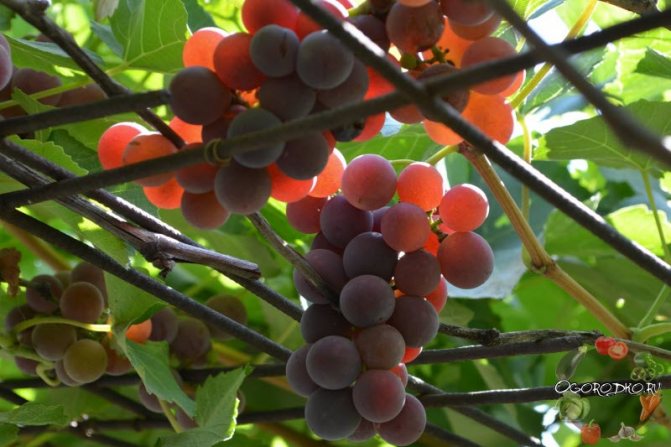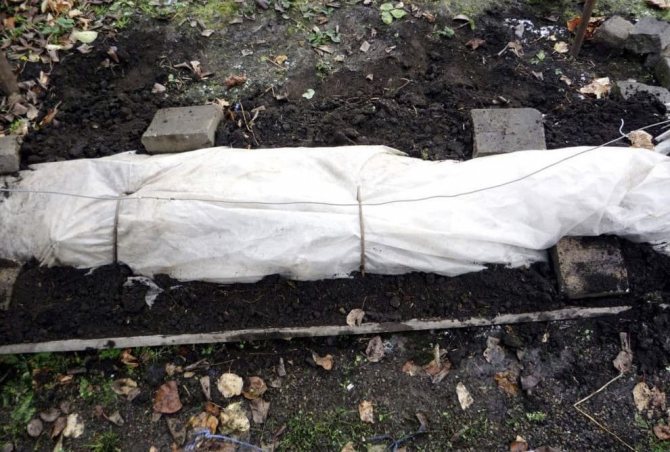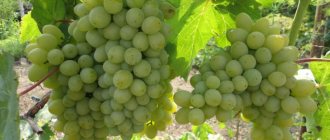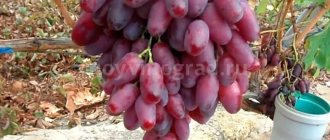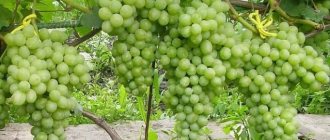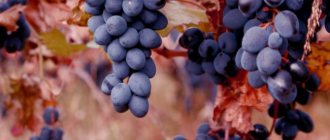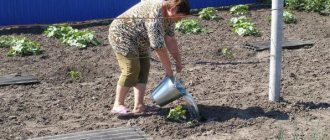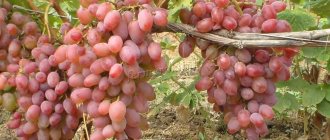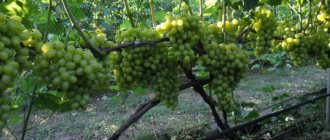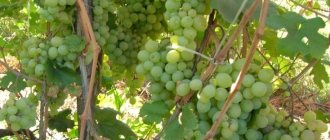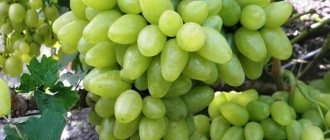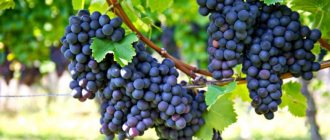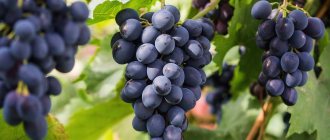The Lydia grape, which is also popularly called Isabella, is an excellent variety for growing in the country, if you need to ennoble the territory by decorating with greenery gazebos, the facade of a residential building, a fence, or if you want to get a large harvest of berries suitable for making wine.
This species will not surprise you with the exquisite taste of berries, but it also does not require much care when growing. Resistance to diseases is not bad, it ripens late, the intensity of growth of shrubs - all this refers to its characteristics. How much is right for you, you can decide by looking at the detailed description of the Lydia grape variety below.
Description of the variety
Photo:
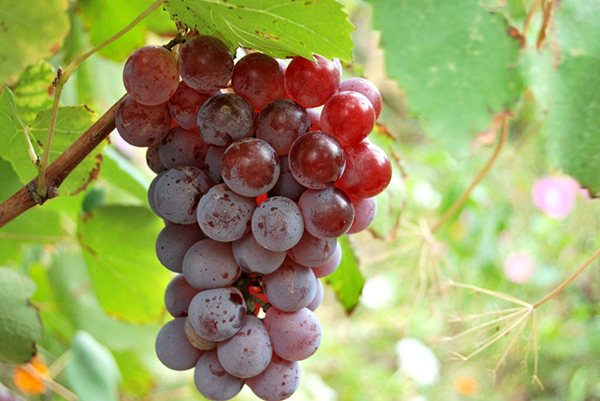
Shrubs of Lydia develop rapidly from the first year of cultivation, as they are distinguished by good survival rate and a high rate of growing vegetative mass. The leaves on the shoots are slightly pubescent, which gives the plant a soft and interesting look.
Bunches are formed on the shoots of 3-4 pieces. Their average weight reaches 100-110 g, the shape is conical, with a not very dense structure of the arrangement of berries. Remarkably, the variety is bisexual, so no additional measures or planting of other varieties of grapes are required nearby for pollination.
The berries themselves have a maximum mass of 3-4 g, a diameter of up to 1.5 cm, a cylindrical, round shape, sometimes slightly elongated to one end, a pleasant pink, dark red or purple hue. There is a waxy coating. The taste is not particularly sophisticated, but there are interesting strawberry notes. The pulp of Lydia grapes is slimy, and the skin is dense. There are small seeds inside the berries.
Important! The sugar content in berries is quite high - about 19%, but even this did not affect the increase in the tasting assessment of the fruit. It remains at the average values, since the taste is still mediocre and “not for everybody”.
Effect of grape variety and processing method on methanol content
The ratio between 1 liter of liquid and 120 mg of methanol (density 0.7918 g / cm³) by volume.
Isabel grapes are characterized by a high content of diglycosides - during the fermentation of grape juice, they form poisonous methyl alcohol. A liter of isable wine produces 70-120 mg of methanol compared to 30-40 mg / l in European varieties. [2] According to other sources, the methanol content in white wines ranges from 20 to 100 mg / l, and in red wines - from 80 to 350 mg / l. [7] The following estimates of the methanol content are also mentioned: in white wines - from 0.2 to 1 , 1 g / l, cognac spirits and cognacs - from traces to 0.8 g / l. In fruit and berry wines, the methanol content is higher than in grape wines.
Scientists from Cornell University published the results of a study of grape varieties and processing methods in 1975 for the formation of methanol from natural enzymes of grapes and pectins. Concorde wines, which fermented in the presence of grape skins without heat treatment, contained the highest percentage of methanol. Wines from the white grape varieties Vitis Vinifera, V. labrusca and hybrids contained less methanol than wines from red varieties. Wine made by hot pressing the grapes contained approximately 10-20% methanol relative to wines from the same varieties fermented with Comparatively high levels of methanol have been found in wines made from Concord or Ives grapes ranging from 400 to 500 parts per million (ppm), although this varied widely over four different years of harvest. obtained from the grapes vinifera "Pinot noir" (Pinot noir) or "Riesling" (Riesling), contained a small amount of methanol, more than p uniform from year to year.
Yield


From one shrub in stable sunny weather, you can remove from 40 kg of berries.
The ripening period is late - the crop is usually harvested only in the middle of autumn. According to the standard, this variety takes 160 days to ripen.
Important! Fresh berries of this grape are consumed, but not too often. They are more suitable for making delicious table and semi-sweet wines, so the cultivation of Lydia grapes is often found on an industrial scale.
When the bunches ripen, it is important to monitor the process. If you miss the moment of picking, the berries begin to crumble strongly.
How to take care of it properly?
Any crop will thank the gardener with a harvest if it is properly cared for. Irrigation of grape bushes is carried out in the spring during the period of bud formation, the next time it is watered when fruit sets. Another addition of water is necessary when the berries are poured.
In hot, dry weather, the trunk circle is moistened once a week.
Foliar dressing is done with mineral and organic fertilizers in order to saturate the vine with the necessary microelements for growth and development. From mid-July, fertilization is stopped to give the plant the opportunity to prepare for winter and not provoke the growth of young shoots.
See also
Description and subtleties of growing Monastrell grapesRead
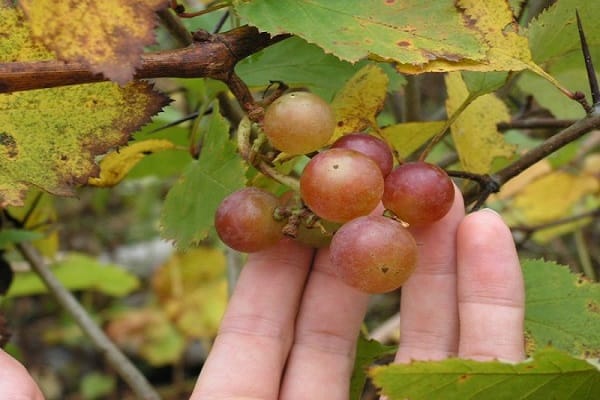

The vine also needs pruning. After winter, damaged and old branches are cut out. When the fruits ripen, stepchildren are removed.
The history of the origin of the variety Lydia
It is one of the few grape varieties that has an interesting breeding history. According to generally accepted data, it was discovered in America as a wild species at the turn of the 20th century. Then he was brought to the territory of Europe, where they started crossing to improve characteristics.
It was at this time that fungi showed themselves, which affected large-scale plantings of more delicate grape varieties, causing losses. And this wild species showed an enviable resistance to infections, which is what became famous.
They began to graft it on shrubs of other varieties in order to save cultural plantings and improve the survival of the vine. As a result, the Lydia grape quickly gained popularity among gardeners in Europe and the Caucasus.
Pruning bushes
The vine of this variety is formed from the second year of the grape's life. Pruning is carried out three times per season.
Spring pruning begins before the juices begin to move. The temperature must be above +5 C˚. This procedure is carried out in order to remove dried shoots.
In summer, Lydia grape bushes need to be thinned out for better ventilation of the vine. For this, stepchildren are cut off. The best time to prune in the fall is from early October to late November.
For the very first time, the shoot is cut at the level of the second or fourth eye. Every year the pruning height is raised. At first, 8 eyes, then 15. Experienced growers recommend the load on the bush - 36 - 49 eyes.
Testimonials
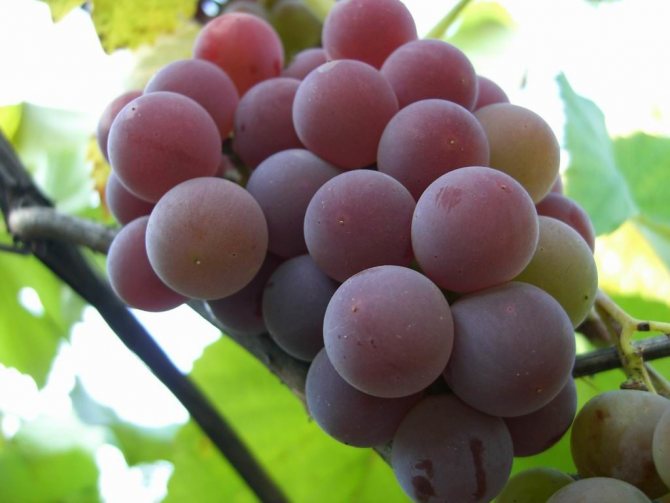

Today the variety Lydia is not very popular in terms of a new planting as a berry variety. The exception is its popularity in winemaking. It is also grown by those with whom it has been growing for a long time on the site.
Based on the reviews of such gardeners about Lydia grapes, the following advantages are distinguished:
- Suitability for the production of different types of wines.
- Unpretentiousness of plants in care.
- High productivity.
- Resistant to rot and fungal infections.
- Good pollination and moisture tolerance.
- Fast response to feeding.
- Transportability of fruits.
- High calorie content of berries.
The disadvantages in the reviews are inherent in Lydia grapes are:
- It is affected by phylloxera.
- The rapid development of shoots and stepchildren, which requires the formation of a bush. If you do not take the necessary care measures, the yield decreases.
- Falling berries after ripening, especially in windy weather.
- A morally outdated variety.
Important! In Europe, the Lydia grape variety is prohibited for cultivation for the production of wine. If the technology and terms of fermentation are not observed, substances harmful to humans can be released from the fruits. Fresh berries do not possess such properties.
Myth or reality is dangerous wine
The main complaints about the grapes of these popular varieties relate to the industrial production of wine, in the process of which, as chemists have found out, methanol is formed. Although many winegrowers think that Isabella grapes have acquired harmful properties, thanks to the inventions and breeding policies of European and American food corporations.
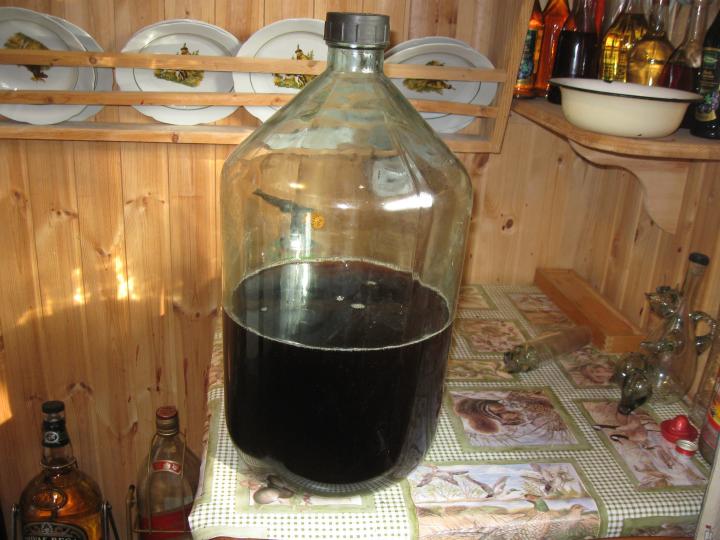

In fact, scientists have proven the increased formation of methanol during the production of wines not only from Isabella and Lydia varieties, but also from all hybrids based on them.
In turn, doctors warn about the dangers of methanol-containing wines, the use of which can cause Alzheimer's disease and lead to brain cancer. "How so?" - summer residents and gardeners will be indignant, making excellent homemade wine "for many years" from these grape varieties. "How dare you?" - the lovers of young homemade wine will cry. It turns out that wine from Isabella and Lydia is poison?
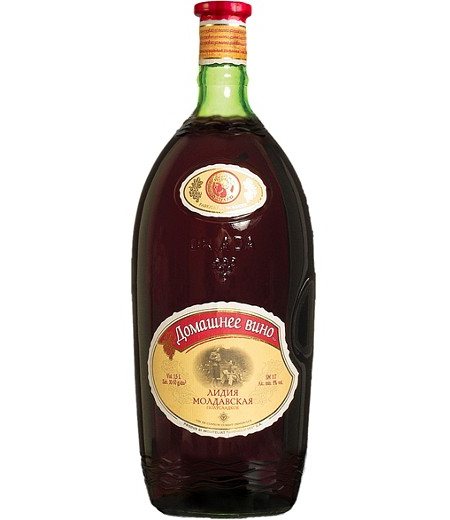

In fact, the Isabella grape, the benefits and harms of which provide food for thought and controversy between wine lovers and scientists, allowed in the USA and many European countries only as a variety for the production of juices and juice drinks... That is why the local inhabitants drink "Bordeaux" and "Chateau Royal". And what to do with Lydia and Isabella for you, decide for yourself. Frankly speaking, our liver does not care what we drink - homemade wine from varieties growing on the site, or an elite "drink of the gods", alcohol is equally harmful if abused.
Growing
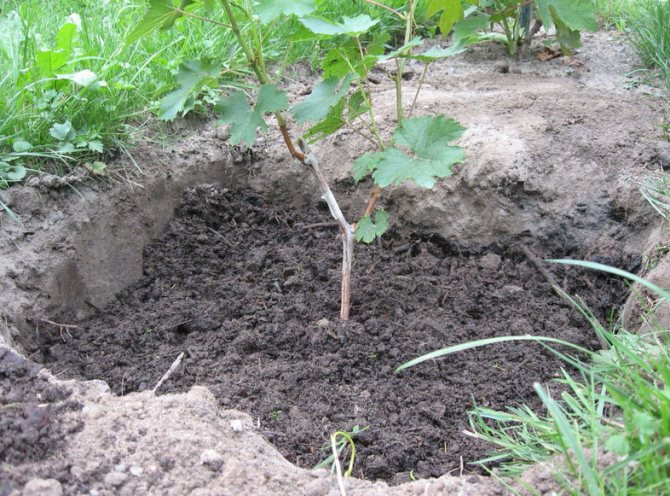

About the cultivation of Lydia grapes, you need to know the following:
- In plants of this variety, there is no particular demand for the type of soil. Shrubs feel good even with an excess of salt and moisture. Only the amount of iron is essential. The optimal type of soil is black earth or loam.
- The height of the groundwater table should be from 1.5 m.
- The landing site must be well protected from winds, drafts, and sunlit.
- Planting can be done both in spring and autumn.
- The distance between seedlings is from 80 cm.
Planting tips
To harvest high yields of berries every year, you need to carefully prepare the planting site. The grapevine bears fruit well in near-wall areas (this can be the wall of a house or farm building). The main thing is that the bush does not grow in a draft and receive a sufficient amount of sunlight throughout the day.
In warm regions, autumn planting of seedlings is recommended, and in areas with cold winters, spring planting is preferable.
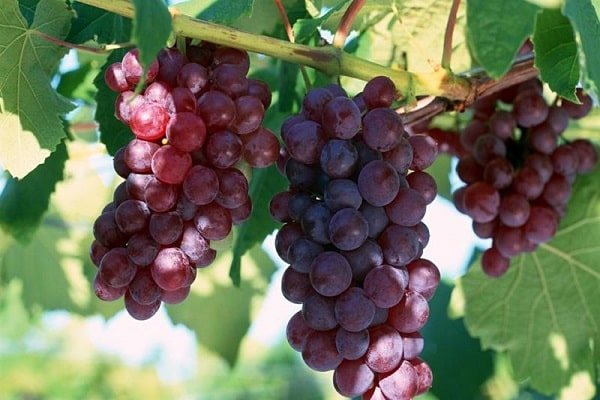

Diseases
According to the description and practical observations, the Lydia grape has a good immunity to gray rot, downy mildew. Therefore, when growing, special preventive treatment of plants from these diseases is not even needed.
But sometimes shrubs are affected by such ailments:
- Phylloxera. The best preventive measure against this pest is grafting onto a stable stock. Also carry out preventive spraying with drugs "Mitak", "Zolon", "Confidor", "Aktellik", "Marshal".
- Calcareous chlorosis. For the prevention and treatment of grapes, spraying with iron-containing preparations is used - "Antichlorosin", "Mikom". From folk remedies, a solution of ferrous sulfate is used at a concentration of 100 g per 10 liters. When watering the soil, the consumption is 3-5 liters per 1 bush.
Advantages and disadvantages of the variety
Like any culture, Lydia has not only advantages, but also disadvantages that should be considered when planning the planting of bushes.
See also
Is it possible to grow grapes from seed at home and how to care for themRead
The indisputable advantages of the variety include:
- The aroma and taste of ripe berries.
- Versatility in application (juice is made from grapes, jam for the winter is made and eaten fresh).
- Use for decorating the site due to its attractive appearance.
- Unpretentious care and survival.
- Not afraid of waterlogging, frost and drought.
- The high calorie content of the fruit allows you to quickly get full.
- Good resistance to diseases such as mildew and powdery mildew (powdery mildew).
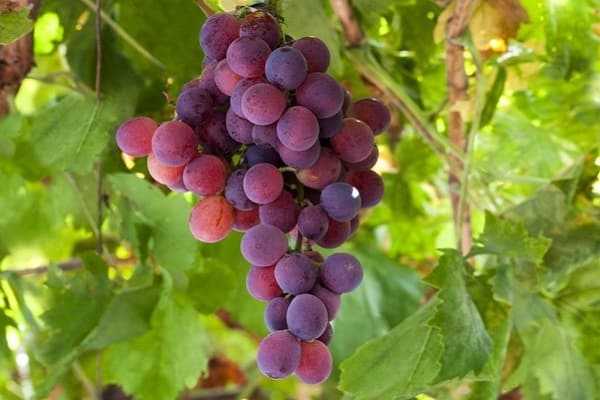

Gardeners consider the main disadvantages of the variety:
- Small size of berries.
- Frequent attack by grape aphids (phylloxera).
- If the harvest is delayed, the berries may fall off from gusts of wind.
- Low resistance to lime chlorosis.
Having weighed the pros and cons, they decide to plant a vine on the site.
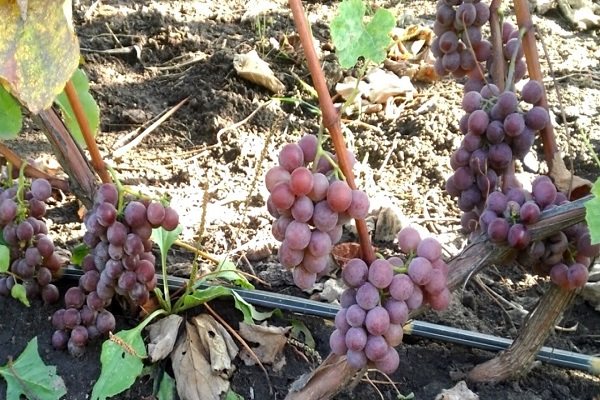

Care
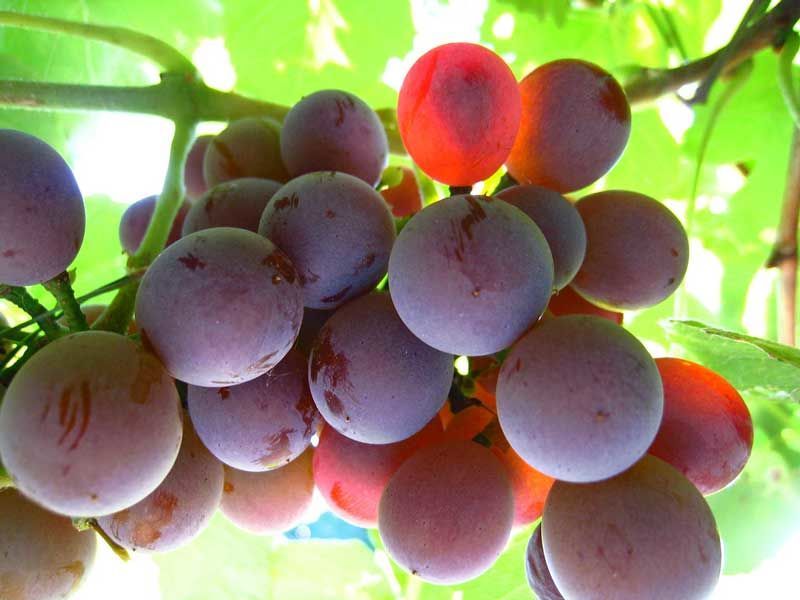

Lydia grape care measures include the following mandatory procedures:
- Pruning for 6-8 eyes.
- Minting at the end of July and pinching at an earlier date.
- After watering, the land near the shrubs is mulched. Most often, sawdust or humus is used for this.
- It is better to organize a shelter for the winter, especially if the climatic conditions are unstable and even slight frosts are possible.
The pros and cons of the Lydia grape variety are enough. Based on the description and reviews, we can conclude that this type of grape is more suitable as a decoration of the site, for making wine, but no more. In this case, even the care measures that have to be followed will not be very burdensome and inappropriate.
Diseases and pests
With proper agricultural technology, the plant is resistant to fungal diseases of the culture and is rarely affected by pests. The only one that damages plantings is the grape aphid. If you do not take action in time, you can lose the entire crop. For treatment, insecticides of the latest generation are used, which are effective only at the initial stage of the defeat.
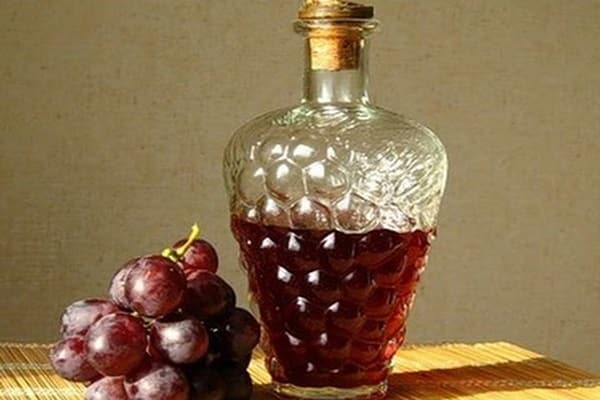

Planting and breeding
When choosing a planting site, keep in mind that the grapes need a lot of sun and ventilation. Therefore, it is better to choose the southern sides of the site, except for the southwest. Strong winds are also not suitable for Lydia, as the berries will crumble. Cuttings can be planted both in spring and autumn. The main thing is to have time to prepare the material before flowering or after it.
Planting seedlings
The landing pit is prepared in advance. If you plan to plant in the spring, you can dig it up in the fall. If you decide to dig it in the spring, it should stand for several weeks. A hole is dug 90 cm in diameter and 90 cm in depth. A layer of expanded clay is placed on the bottom for drainage. Sand, humus or compost, potash-phosphorus fertilizers and iron are added to the soil.
Some gardeners prefer to graft young plants onto existing rootstocks of old shrubs. For this, cuttings with three eyes are harvested in the fall. They are stored in sand at temperatures up to 12 ° C, for example, in a cellar.
In the spring, the workpieces are taken out, the lower parts are cut off. The tops are sealed with paraffin to retain moisture. A 5–8 cm stump is left from the old bush, removing everything else. Split the stump and insert the handle into the slot. In this case, the latter seems to be clamped in a vice. This place is wrapped with cloth and covered with clay. The land around is watered, dug up and mulched.
You can plant Lydia in spring or autumn. After choosing the time for disembarkation, you need to find a place on the site. The best choice is the south or southeast side, sheltered from the winds.
Lydia grapes love fertile soils, so give preference to black soil or light loam. Pay attention to the groundwater level, which should not be higher than 1.5 meters.
Important! The pit for the autumn planting is prepared in advance, at least 14 days before the procedure. In the case of a spring disembarkation, it is dug up in the fall.
You need to plant grapes in holes, which are dug at a distance of 1.5 m from each other. Their depth should be at least 0.8 m. Gradually, a drainage layer of rubble or broken brick is laid in them, about 5 cm high.
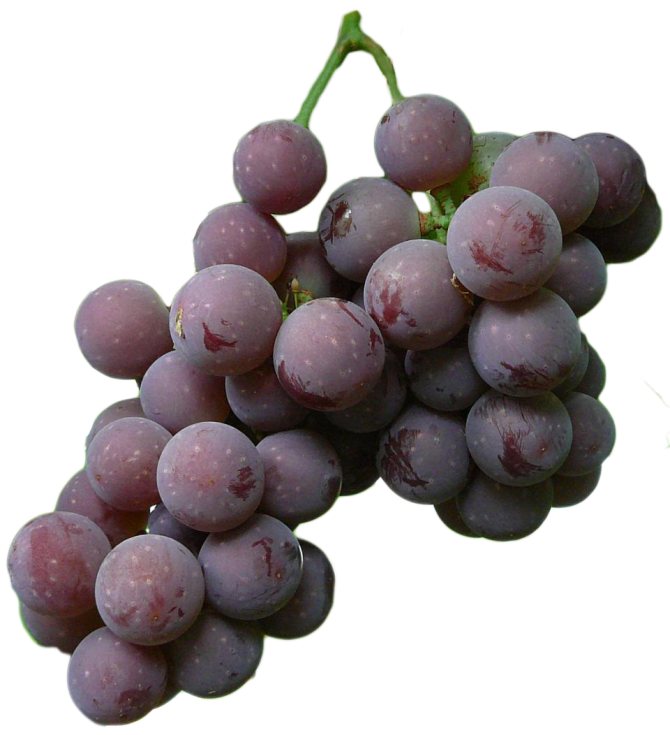

Next, the soil is poured, mixed with sand, humus and mineral fertilizers such as potassium, phosphorus and iron. Everything is carefully dug up, and a peg is driven in from the north side for a vine garter. In this state, the hole is left in order for the soil to settle.
The most common pests of grapes "Lydia"
Spider mite - foliage is affected and crumbles. To combat this pest, in the spring the vine is sprayed with the "Dnok" solution. Spraying is carried out before the buds bloom. In autumn, grapes are processed with Phosphamide.
For prevention purposes, weeds are weeded, where ticks multiply. The damaged leaves are burned.
The leafworm is a type of caterpillar that feeds on fruits and leaves. If the weather is damp, bunches can rot. To avoid contamination in the spring, the bushes and the soil around them are treated with the "Dnok" solution. Illumination and ventilation of the bushes is the best prevention.
Phyloxera are rooted insects. They attack the roots of the grapes. There is also a leaf type of these pests. They affect the aerial part of the plant. Symptoms are swollen roots or leaves. To save the plant, it is sprayed with Confidor solution. For prophylaxis, the soil area around the Lydia bushes is covered with fine-grained sand.
Lidia grapes have gained great popularity in Russia, Moldova, and Ukraine. It is also used for decorative purposes - it perfectly decorates and hangs over awnings and gazebos.
How to prepare the vine for wintering
Lydia grapes are quite frost-resistant. If it is grown in regions with harsh winters, it is better not to risk it and prepare additional shelter for the bushes.
How does the hiding process take place? Everything is simple here. The grapevine is carefully removed from the trellis, easily tied and sprinkled with a layer of earth. It turns out a bed with a height of 10-15 centimeters.
One of the great advantages of the Lydia variety is that it is resistant to mildew infections. In order for the grapes not to be struck by other diseases, it is necessary to carry out prevention.
Breeding history
Lydia was bred in Europe by crossing various varieties. After its discovery, many new plants were brought from America, among them the vine of the wild grape Vitis labrusca, which European breeders took to work. But it turned out that along with the grapes, they got such problems as powdery mildew and grape aphids. The wild variety itself did not suffer from these diseases, and the "Europeans" began to get sick en masse.
Breeders planted cultivated varieties on Vitis labrusca and as a result got a new, disease resistant and unusual in taste variety. Until 1999, it was popular and was grown in large quantities in Ukraine, Moldova and Russia, mainly for winemaking. However, now wines from Lydia are banned in Europe and America. The fact is that after fermentation, the wine material produces substances that have harmful properties.
Important! Fresh berries are safe and just as healthy as other grapes.
When to harvest and how to store the crop?
There are often disputes among gardeners: when to harvest? Tentatively, Lydia begins to collect in mid-September. But cleaning times differ depending on the region. It is better to focus not on dates, but on how the berries look:
- evenly colored;
- the stem of the bunch is lignified;
- grapes, when ripe, exude a pleasant aroma;
- the berry tastes sweet, without sourness.
Read more about the timing and basic rules of grape harvest.
It should be remembered that harvesting can only be done in dry, sunny weather. Do this in the afternoon, when the berries have dried from dew. If there are rotten berries on the bunches, they are thrown away. Cut off the bunches with a sharp pruner.The grapes are placed in boxes at an angle, in one layer. Store in a cool, dry place with adequate ventilation. The temperature should be constant, without fluctuations - up to + 15 ° С. The bunches are periodically inspected for rot.
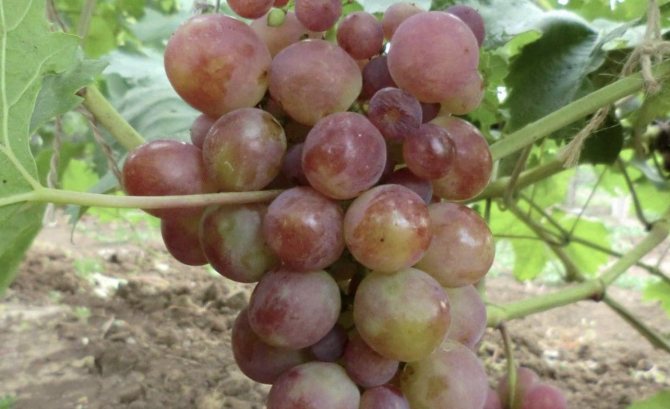

If you don't already have this proven grape in your collection, try planting it. It does not require a lot of effort and time, and will delight you with an excellent harvest. No other variety has such a strawberry flavor. Accordingly, everything that can be prepared from grapes will be tasty and original. And treating yourself and your family with just fresh berries is also nice.

